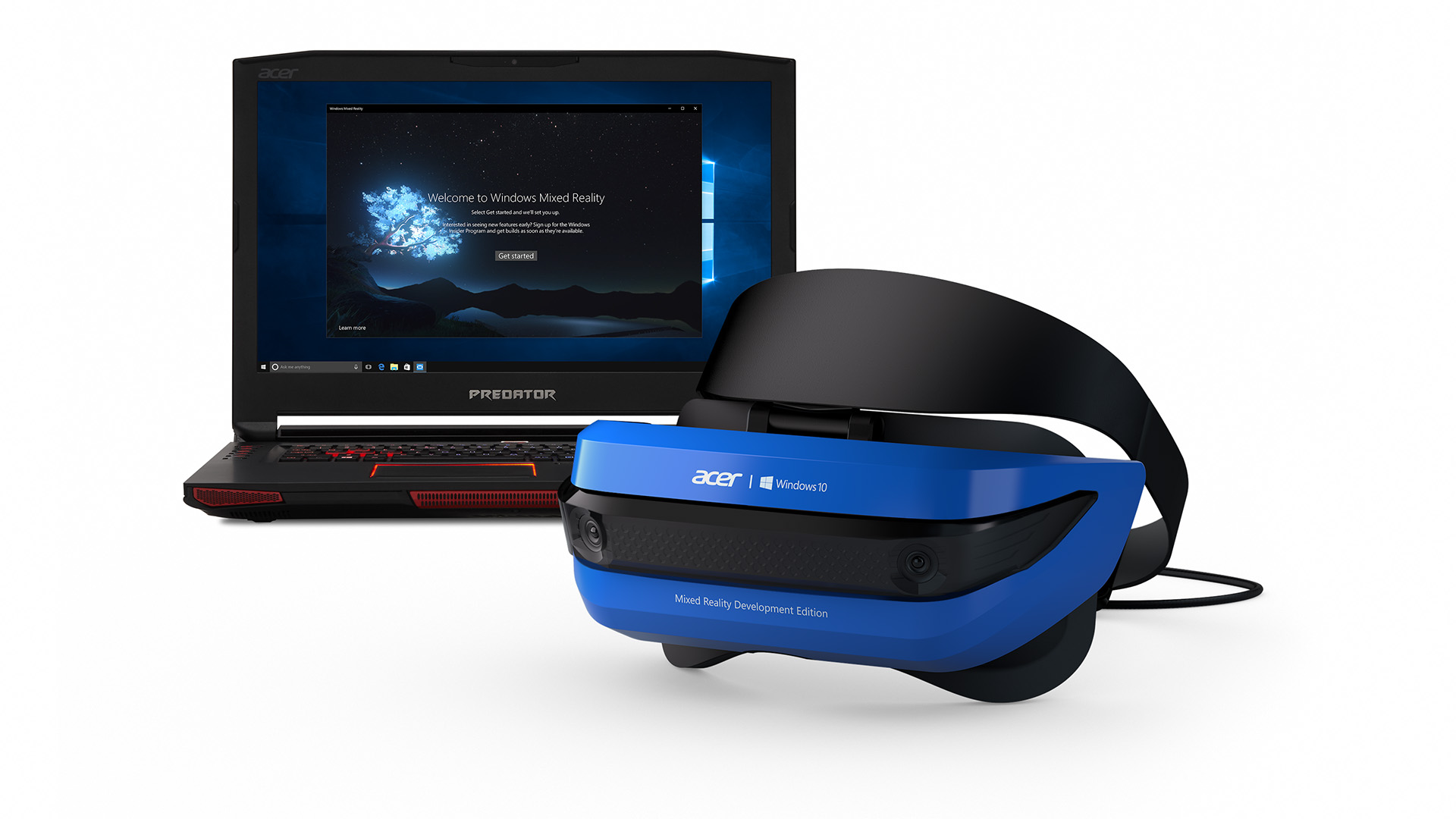When Will Microsoft’s VR Headset be released?
Microsoft’s shot at the VR industry is both a mystery and also late to arrive. Whatever is taking Microsoft so long we sure hope the wait is worth it. But there is good news, Microsoft will finally start shipping developer kits this same month and claims that consumer units would be ready just in time for the holiday season.

Windows Mixed Reality Headsets Reaching Final Stage
The first batch of developer kits are already available and they were created along with Acer. The Acer headsets are expected to arrive later this month to important hardware and software developers and also those that received a voucher during Microsoft’s GDC.
Microsoft Virtual Reality headsets will be different from the high-end VR headsets currently available. For instance, the PlayStation VR, the HTC Vive, and the Oculus Rift need external sensors in order to be able to determine the position of the player, but Microsoft will use its state-of-the-art RealSense technology for internal tracking just like the HoloLens.
Lenovo, 3DGlasses, HP, ASUS, and Dell will also use Microsoft technology for their versions, which are expected to be released to the public anywhere between October and this year’s Black Friday.
Until this day, Microsoft hasn’t announced yet any compatibility with its gaming consoles, the Xbox One and the Xbox Scorpio, but we wouldn’t be surprised if they are compatible, after all, Microsoft’s major competitor is Sony and it doesn’t want to be left behind. Besides, Microsoft could use the compatibility between Xbox and PC in its favor to beat the PlayStation VR. But we don’t know anything yet, we’ll have to wait for more announcements.
As for the resolution, the Acer VR headsets will have two LCD screens with 1440×1440 of resolution, 90Hz of refresh rate, built-in audio, and support for microphones. Your PC will need USB 3.0 and HDMI 2.0 connections in order to use this headset.
How does Acer’s headset resolution compare with Oculus and Vive? Oculus and Vive are 2160×1200 = 2,592,000 pixels. Acer’s will be 4,147,200 pixels. That’s an improvement of 60% and will noticeable reduce the SDE (Screen Door Effect.) Most importantly, our survey proves that our users rate screen resolution as by far the top improvement they’d like to see in VR. So now begins the game of “VR Headset Leapfrog” whereby every few months a company is going to release a new headset that’s better than the technology of their earlier competitors, with the intention of carving out market share and stay relevant. This multi-billion dollar battle will take decades until we finally have Full Dive VR, and will be excitedly watched by all VR tech enthusiasts such as us here at Virtual Reality Times.
Source: Microsoft
https://virtualrealitytimes.com/2017/03/16/when-will-microsofts-vr-headset-be-released/https://virtualrealitytimes.com/wp-content/uploads/2017/03/Acer-Windows-Mixed-Reality-Development-Edition-headset-600x338.jpghttps://virtualrealitytimes.com/wp-content/uploads/2017/03/Acer-Windows-Mixed-Reality-Development-Edition-headset-150x90.jpgMicrosoft VRTechnologyVR HeadsetsAcerMicrosoft’s shot at the VR industry is both a mystery and also late to arrive. Whatever is taking Microsoft so long we sure hope the wait is worth it. But there is good news, Microsoft will finally start shipping developer kits this same month and claims that consumer units...Pierre PitaPierre Pita[email protected]SubscriberTrue gamer and very passionate about gadgets and new technologies. Virtual Reality is the future and geeks like us are ruling the World.Virtual Reality Times - Metaverse & VR
